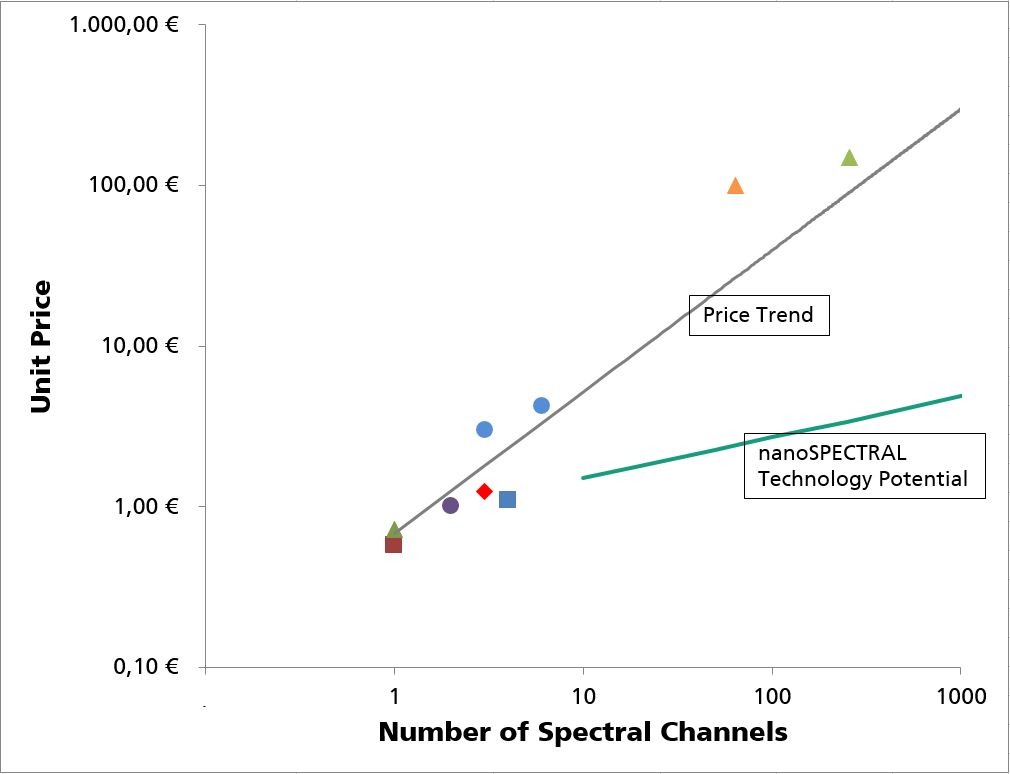Optical nanostructures in CMOS technology concerns the ability to structure the metal surfaces employed within a modern semiconductor process at the nanometer scale in such a way that they allow complex color and/or polarization sensors to be manufactured at a reasonable price. This calls for an understanding of surface plasmon effects in metals and materials relevant to CMOS as well as the optics expertise to design filters – expertise that Fraunhofer IIS possesses. Fraunhofer IIS has also developed the capacity to optically model nanostructured metals, along with simulation and design capabilities for nanostructured color and polarization sensors.
Here you find more information about our services.
